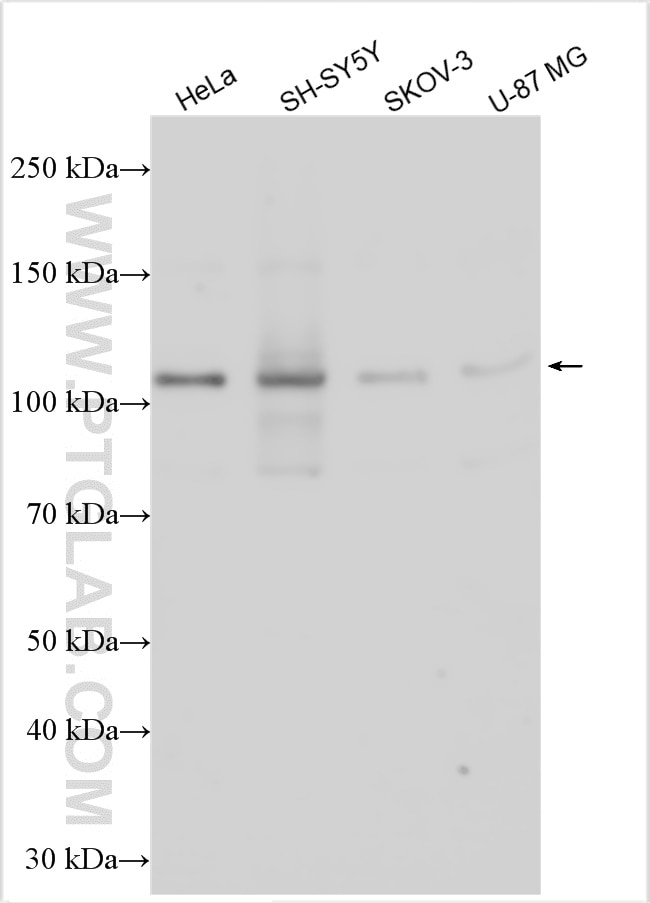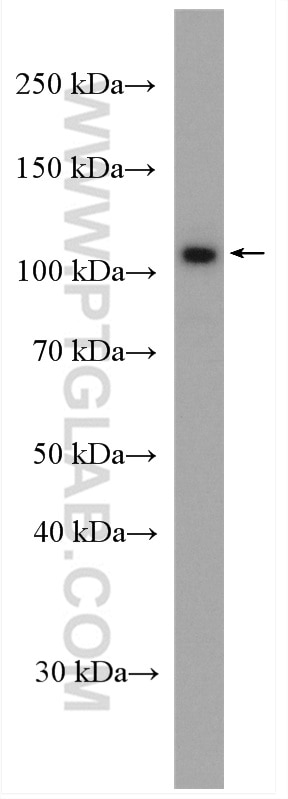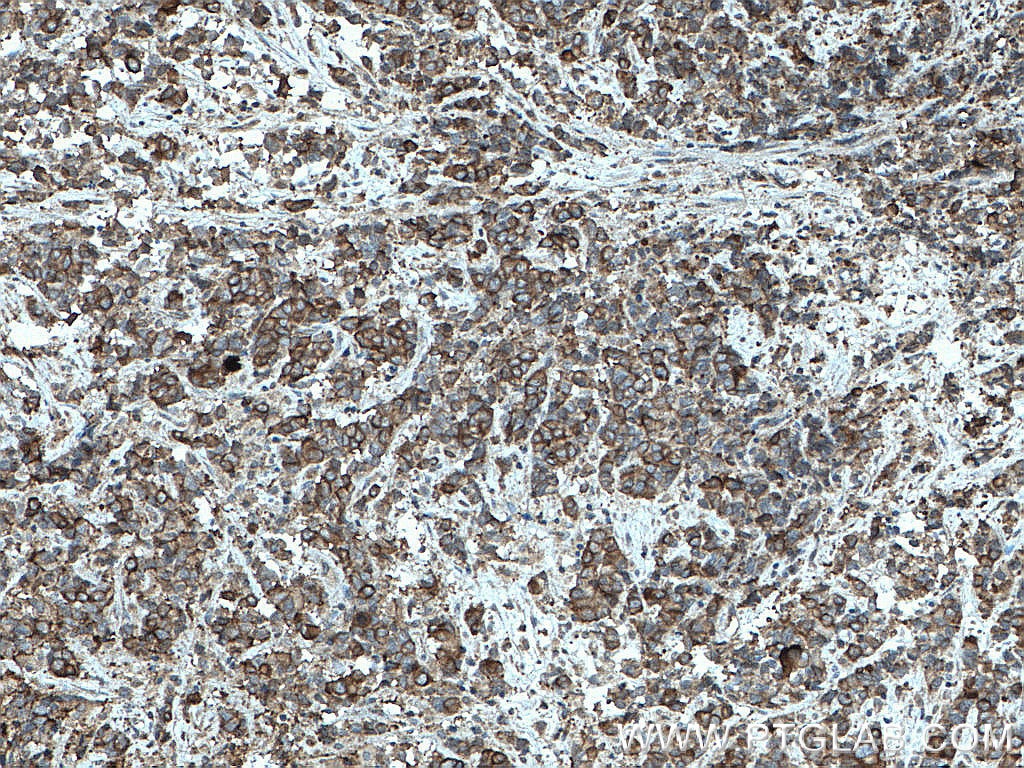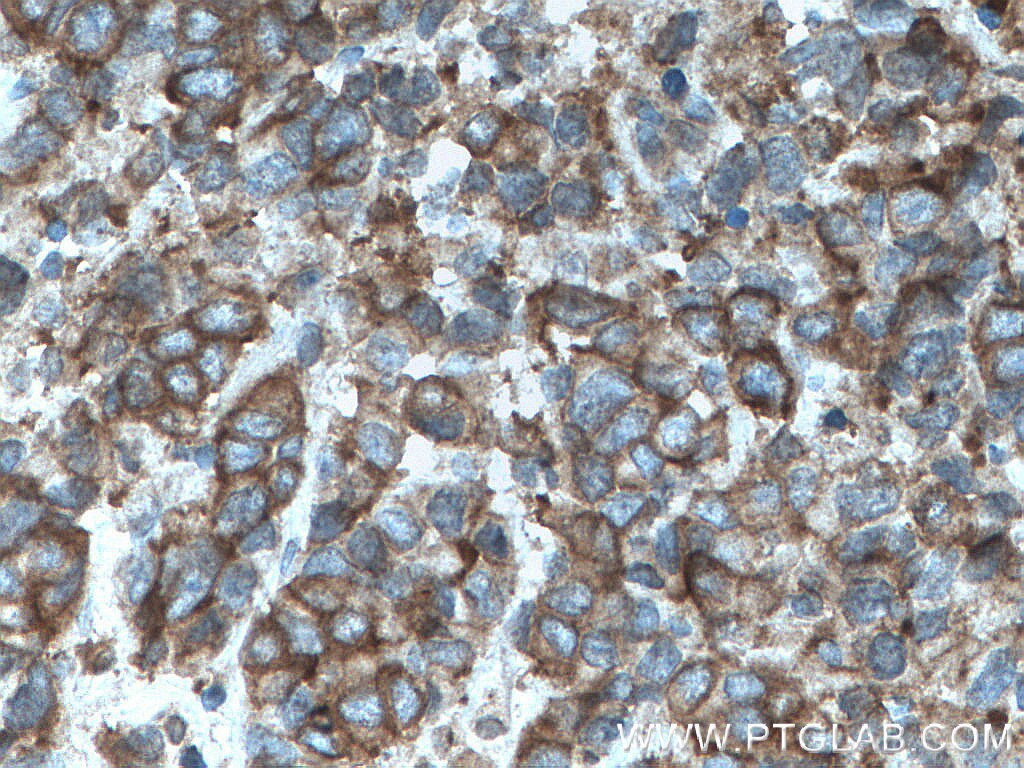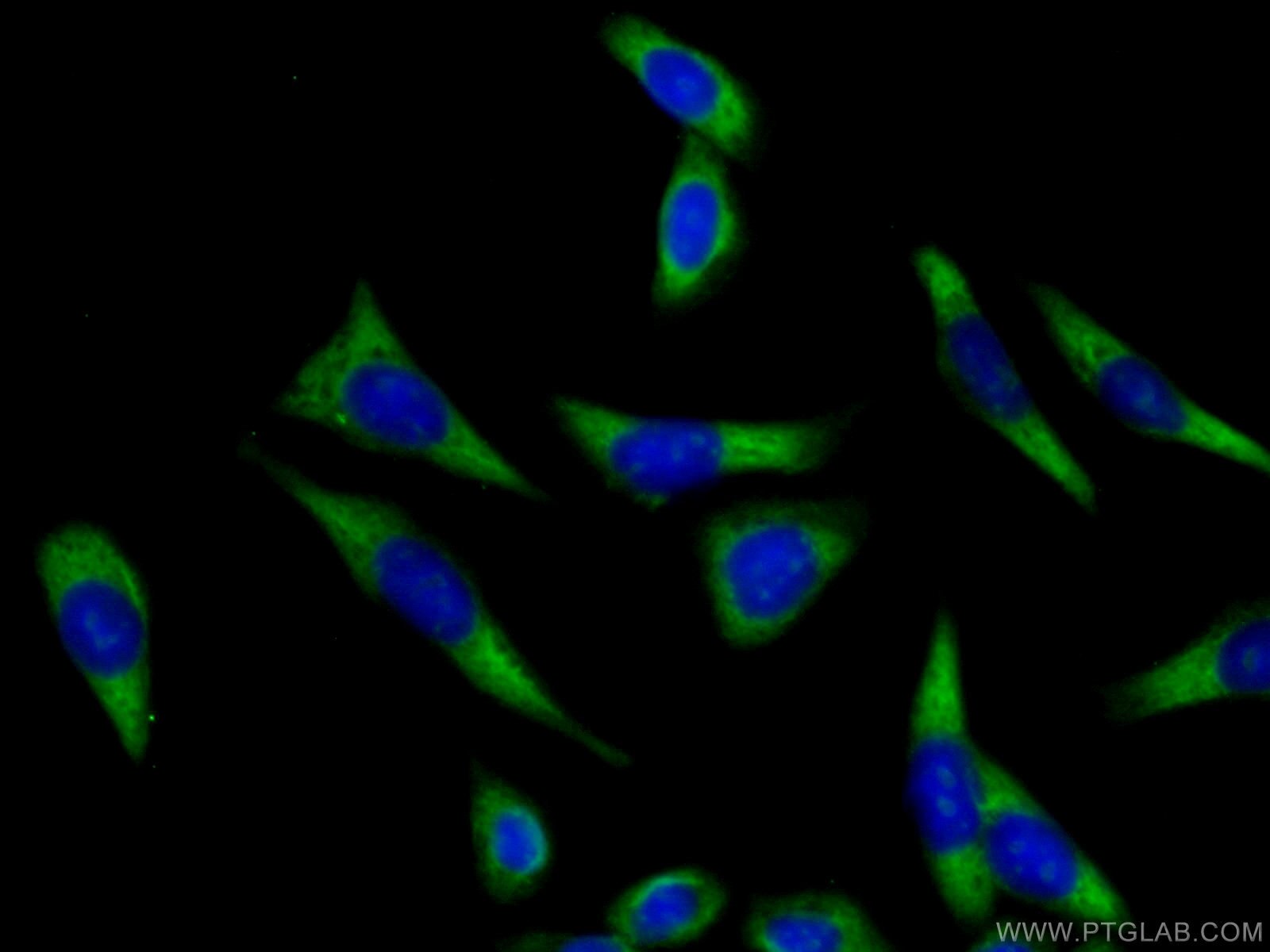Anticorps Polyclonal de lapin anti-ATP1A3 (middle)
ATP1A3 (middle) Polyclonal Antibody for IF, IHC, WB, ELISA
Hôte / Isotype
Lapin / IgG
Réactivité testée
Humain
Applications
WB, IHC, IF, ELISA
Conjugaison
Non conjugué
N° de cat : 28030-1-AP
Synonymes
Galerie de données de validation
Applications testées
| Résultats positifs en WB | cellules HeLa, cellules MG U-87, cellules SH-SY5Y, cellules SKOV-3 |
| Résultats positifs en IHC | tissu de cancer de la prostate humain, il est suggéré de démasquer l'antigène avec un tampon de TE buffer pH 9.0; (*) À défaut, 'le démasquage de l'antigène peut être 'effectué avec un tampon citrate pH 6,0. |
| Résultats positifs en IF | cellules HeLa, |
Dilution recommandée
| Application | Dilution |
|---|---|
| Western Blot (WB) | WB : 1:5000-1:50000 |
| Immunohistochimie (IHC) | IHC : 1:50-1:500 |
| Immunofluorescence (IF) | IF : 1:50-1:500 |
| It is recommended that this reagent should be titrated in each testing system to obtain optimal results. | |
| Sample-dependent, check data in validation data gallery | |
Applications publiées
| WB | See 2 publications below |
| IF | See 1 publications below |
Informations sur le produit
28030-1-AP cible ATP1A3 (middle) dans les applications de WB, IHC, IF, ELISA et montre une réactivité avec des échantillons Humain
| Réactivité | Humain |
| Réactivité citée | Humain |
| Hôte / Isotype | Lapin / IgG |
| Clonalité | Polyclonal |
| Type | Anticorps |
| Immunogène | ATP1A3 (middle) Protéine recombinante Ag27705 |
| Nom complet | ATPase, Na+/K+ transporting, alpha 3 polypeptide |
| Masse moléculaire calculée | 113 kDa |
| Poids moléculaire observé | 113 kDa |
| Numéro d’acquisition GenBank | BC015566 |
| Symbole du gène | ATP1A3 |
| Identification du gène (NCBI) | 478 |
| Conjugaison | Non conjugué |
| Forme | Liquide |
| Méthode de purification | Purification par affinité contre l'antigène |
| Tampon de stockage | PBS avec azoture de sodium à 0,02 % et glycérol à 50 % pH 7,3 |
| Conditions de stockage | Stocker à -20°C. Stable pendant un an après l'expédition. L'aliquotage n'est pas nécessaire pour le stockage à -20oC Les 20ul contiennent 0,1% de BSA. |
Informations générales
ATP1A3 participates in the catalyticing hydrolysis of ATP and the exchanging of sodium and potassium ions across plasma membrane. The catalyticing activity mode is ATP + H2O + Na+(In) + K+(Out) = ADP + phosphate + Na+(Out) + K+(In). It has been published that the neurologic disorders rapid-onset dystonia-parkionsonism (RDP), alternating hemiplegia of childhood (ACH) and CAPOS syndrome (cerebellar ataxia, areflexia, pes cavus, optic atrophy and sensorineural hearing loss) are all related with the mutation of ATP1A3. There are other reports suggest that early life epilepsy and episodic apnea revealing are potentially associated with the mutation of ATP1A3 as a result of impairment of Na+/K+ homeostasis. This antibody is generated agaist the middle region (378-580aa) of ATP1A3 and detects 113 kDa protein in SDS-PAGE.(PMID: 30097153, 20301294, 29922587)
Protocole
| Product Specific Protocols | |
|---|---|
| WB protocol for ATP1A3 (middle) antibody 28030-1-AP | Download protocol |
| IHC protocol for ATP1A3 (middle) antibody 28030-1-AP | Download protocol |
| IF protocol for ATP1A3 (middle) antibody 28030-1-AP | Download protocol |
| Standard Protocols | |
|---|---|
| Click here to view our Standard Protocols |
Publications
| Species | Application | Title |
|---|---|---|
Nat Commun Homophilic ATP1A1 binding induces activin A secretion to promote EMT of tumor cells and myofibroblast activation. |
